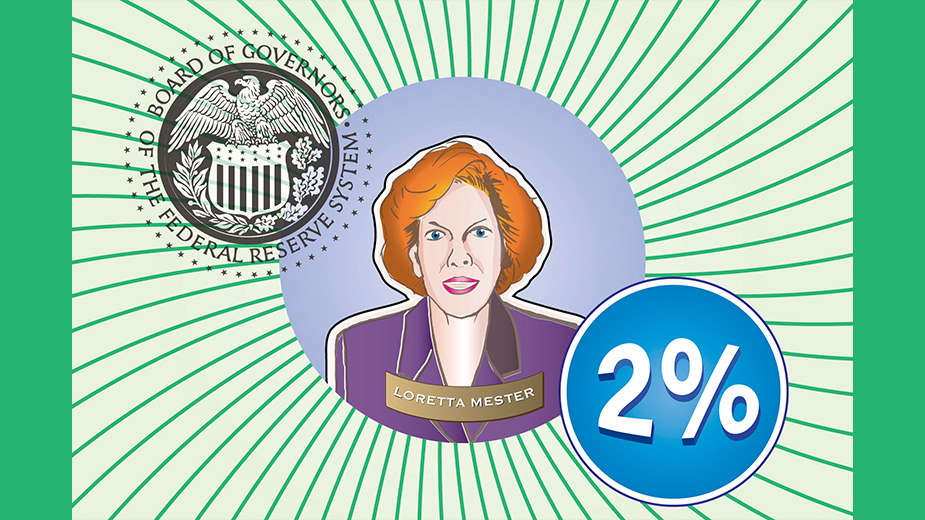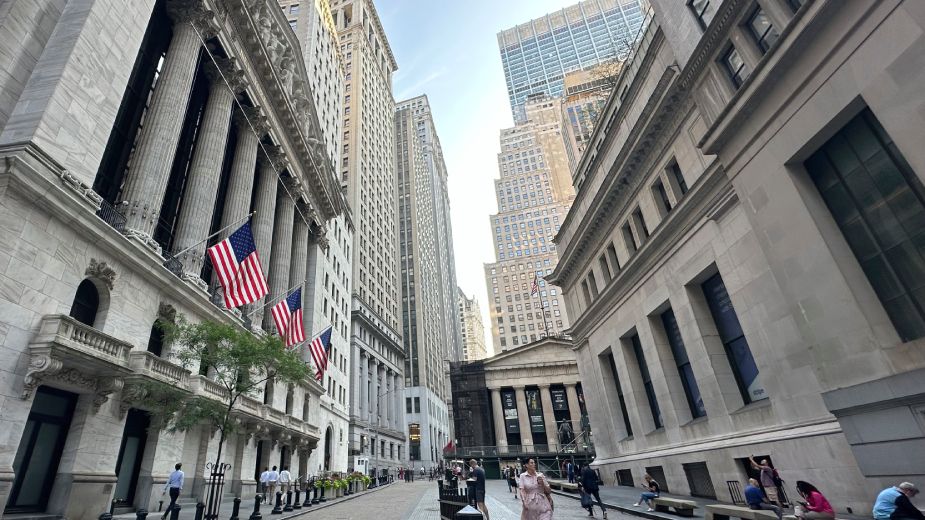2024 Economic Forecast: Slower Growth, Lower Inflation
CLEVELAND – Indicators show inflation may be slowly leveling out or declining in 2024, while the economy somewhat unexpectedly grew at a solid pace in 2023, according to Ed Knotek, research director at the Federal Reserve Bank of Cleveland.
Knotek, speaking Thursday about the 2024 economic outlook during a Fed Talk, was unable to say, however, when interest rates may be lowered and was careful to say that the eventual decision on interest rates will be made by the Federal Open Market Committee.
Knotek did talk through some of the statistics created by inflation researchers at the Cleveland Fed, which show the high inflation rates seen during parts of 2022 and 2023 continue trending downward in all sectors of the economy.
However, segments of the economy remain above the 2% average threshold the Fed seeks to maintain and where they were in 2018.
But there are some positives in the economic outlook.
Knotek pointed to growth, especially in the third quarter of 2023, when real Gross Domestic Product grew at 4.9%. He said that is projected to drop back to about 2% when figures are released from the fourth quarter. GDP was just above 2% in the first and second quarter of 2023.
“In absolute terms, this is good growth for the economy,” Knotek said. “It is even more impressive given forecasts earlier last year that the economy would contract in parts of 2023.”
Knotek said the economy in 2023 was buoyed by strong consumer spending, which accounts for two-thirds of all spending in GDP and grew “robustly” in the first and third quarter.
Additionally, Knotek said the labor market remains strong, but not as tight as earlier. Earlier problems in the areas of supply and demand are balancing out and, with that, inflation seems to be leveling, he said.
Knotek pointed to the December monetary meeting of the Federal Open Market Committee, when it was suggested the federal funds rate may start declining this year under somewhat slower growth and lower inflation. Though only a couple quarters of growth or decline can be an anomaly, Knotek believes the continuation of some indicators could show an actual lowering of the inflation rate.
At the FOMC meeting in December, it was determined to leave the target range for federal funds rate unchanged at 5.25% to 5.5%. The next meetings of the board, which helps shape economic policy, is slated for Jan. 30 and 31.
Looking at 2023 and comparing it to where the economy was pre-pandemic in 2018, Knotek said consumers have changed their spending habits over the past five years, from mostly spending on services to now buying goods. The major shift occurred during the pandemic, and the trend continues, but he questions for how long.
Some of the reasons he gave for spending trends include improvements in supply chain pressures during 2020 and 2021, putting things back to where they were in earlier decades.
Also, there has been growth in personal income in the U.S., including both wage growth and pandemic-related fiscal stimulus. Checking and savings account balances still exceed their pre-pandemic norms, according to Knotek.
Wages grew by 4.5% in the third quarter of 2023, which is still elevated from pre-pandemic levels, according to Knotek, although down from early 2022. And wage growth is slowing.
Although still the highest inflation subgroup, the housing market is starting to gradually turn around, Knotek believes. He said there was a large jump in sales in 2020, but that was affected by inflation on housing prices due to limited new home inventory and more costly construction materials. Then when mortgage interest rates rose in 2022, that led to a decline in existing home sales. Knotek said housing prices are up 40% from 2020.
Consumer spending on tenant rents has begun to come down with additional units built, which, looking historically, may be an indicator to further declines in housing inflation over the next year, Knotek said.
He also talked about other indicators to watch for with the economy in 2024.
Overall, the unemployment rate was 3.7% in December 2023 after peaking at 15% in April 2020 during the pandemic. It is up just slightly from the 54-year low it reached in January and April 2023, but Knotek said it is still low by historical standards.
Additionally, he said labor force participation is on the rise despite downward pressure from the baby boomer generation exiting the labor force. Knotek pointed to solid job growth as yet another indicator of a strong labor market. The job openings rate remains elevated, but it is down two points from its peak in March 2022, he said.
Pictured at top: Photo by Robert F. Bukaty. (AP Photo | File)
Copyright 2024 The Business Journal, Youngstown, Ohio.



